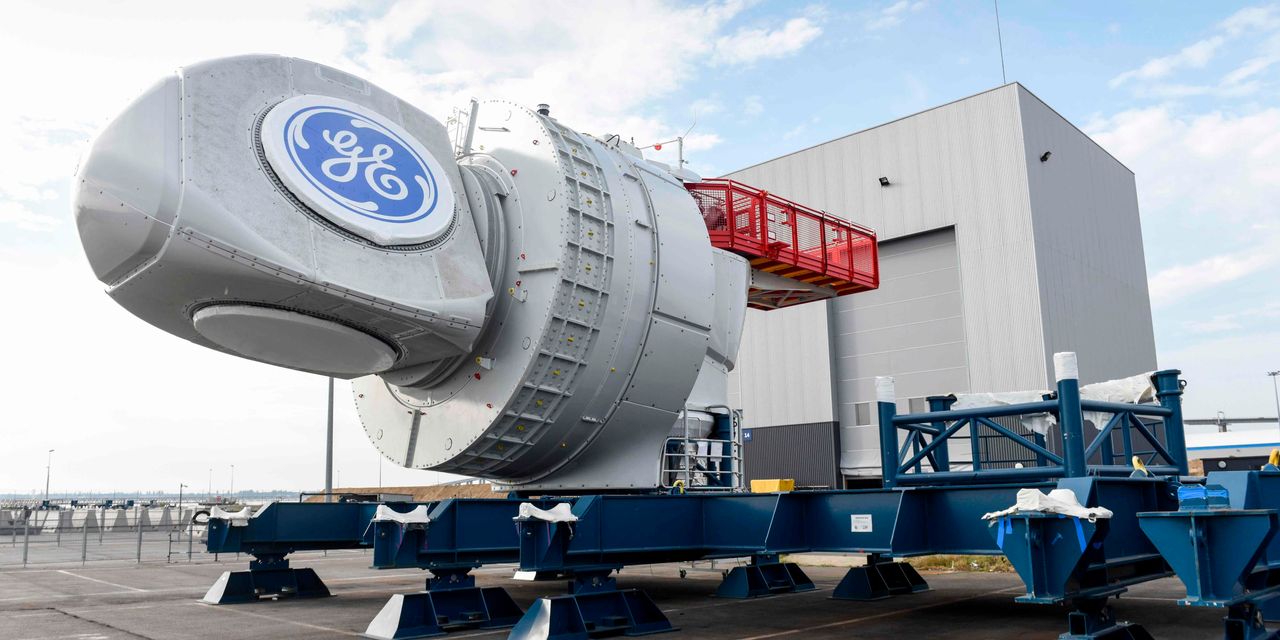General Electric Co.
GE 1.20%
reported stronger profits as cost cutting offset lower-than-expected sales of its industrial equipment in the September quarter.
Revenue increased in the company’s jet engine business as travel rebounded from the start of the pandemic, but sales declined in its healthcare business from supply-chain shortages. The renewables division also booked a sales drop while the power business was flat.
Overall revenue fell 1% from a year ago to $18.43 billion, while GE’s expenses declined 7%. Wall Street analysts were expecting revenue to increase 4% to $19.3 billion, according to FactSet.
“The teams are managing through a challenging operating environment,” including supply chain disruptions and uncertainty around U.S. tax credits for onshore wind farms, CEO
Larry Culp
said in a press release.
GE’s quarterly profits came in ahead of Wall Street’s expectations and the manufacturer raised its earnings goals for the full year. It also narrowed the forecast for free cash flow from its industrial business, a closely watched metric.
GE said 2021 revenue would be flat, down from a previous view of growth by a low-single digit percentage. The company projected increased revenue, cash flow and profit margins for 2022 but said it would provide more details at a later date.
Mr. Culp recently passed his third anniversary of running GE, a job he took in 2018 after being on the struggling company’s board for just six months. At the time, GE faced enormous debt and trickling cash flow, largely from hidden costs in its financial-services unit and mismanagement of its core power business.
After taking the reins, Mr. Culp cut the dividend to a token penny a share, sold major businesses like transportation, oil and life sciences. He streamlined existing divisions using lean management principles, while betting much of the future on the continued growth of the aviation industry. When the pandemic hit, that bet turned sour as airlines grounded planes and canceled jet purchases, prompting GE to lay off a quarter of the division’s workers.
GE shares are up about 22% this year, closing Monday at $105.30, matching the increase in the S&P 500 index over the same period. The company completed a 1-for-8 reverse stock split in August.
SHARE YOUR THOUGHTS
What is your outlook on the future of GE? Join the conversation below.
Since Mr. Culp joined on Oct. 1, 2018, GE’s total shareholder return, which includes dividends, was 14.7% as of Monday’s closing price, compared with a total return of about 65% from the S&P 500, according to FactSet. The shares were little changed in early Tuesday trading.
The share price performance has lagged behind rivals but GE’s debt load is much smaller from asset sales. It is shedding most of its jet-leasing business in a deal now expected to close next week, sooner than previously expected. That deal with
AerCap Holdings
NV is expected to bring in $24 billion in cash by year-end, cutting GE’s debt load by more than $75 billion in three years.
In a sign of GE’s confidence in its improving financial position, the company made two small healthcare acquisitions in the past year and recently agreed to buy medical imaging company BK Medical for $1.45 billion in cash.
Write to Thomas Gryta at thomas.gryta@wsj.com
Copyright ©2021 Dow Jones & Company, Inc. All Rights Reserved. 87990cbe856818d5eddac44c7b1cdeb8














































